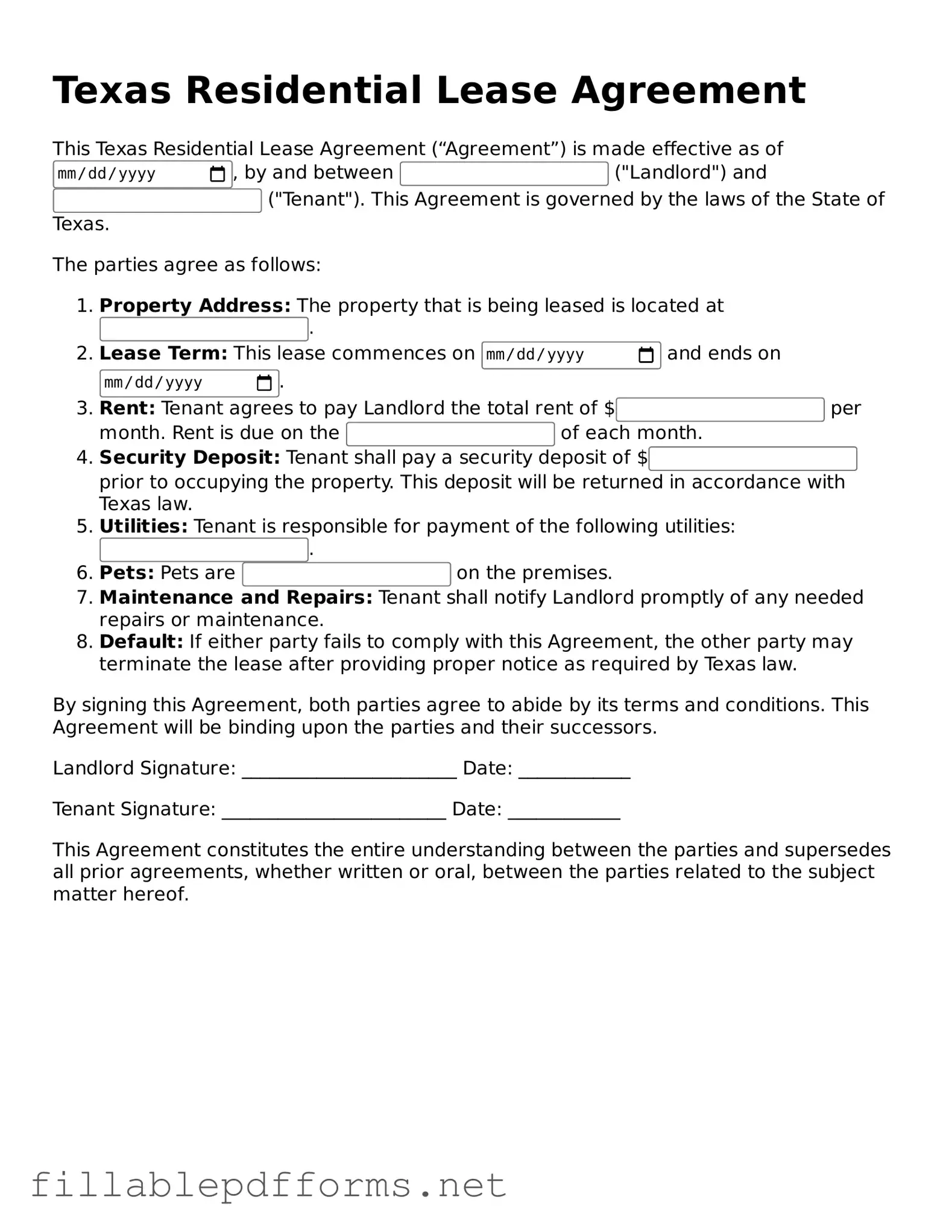Attorney-Verified Residential Lease Agreement Form for Texas State
The Texas Residential Lease Agreement is a legally binding document that outlines the terms and conditions between a landlord and tenant for renting a residential property in Texas. This form serves to protect the rights of both parties while clearly defining their responsibilities. Understanding this agreement is essential for ensuring a smooth rental experience and avoiding potential disputes.
Launch Editor Here
